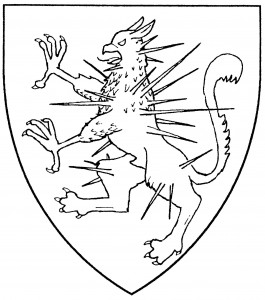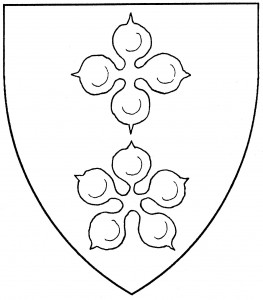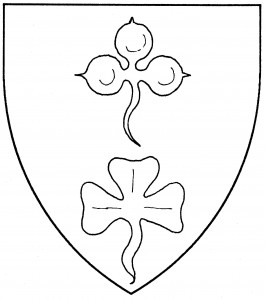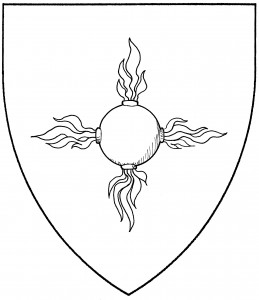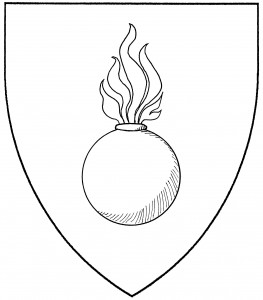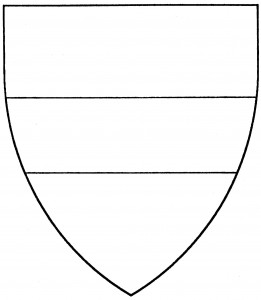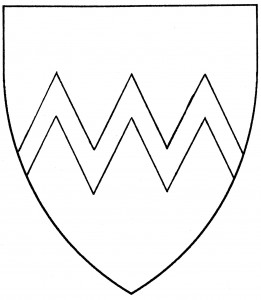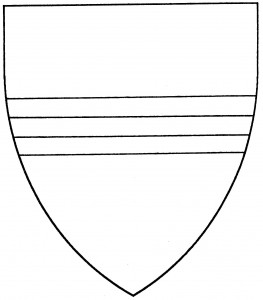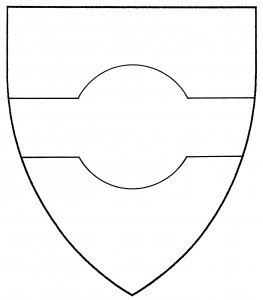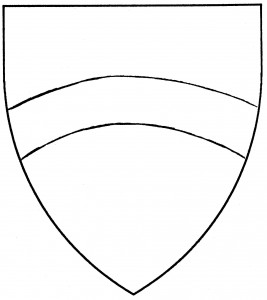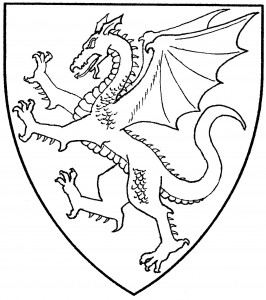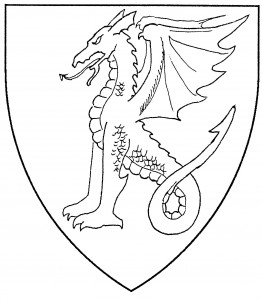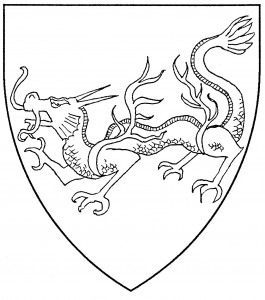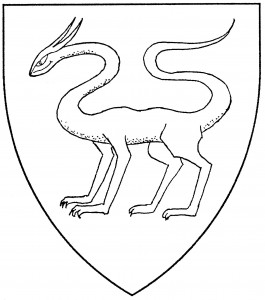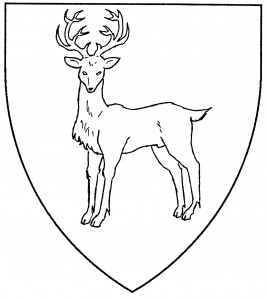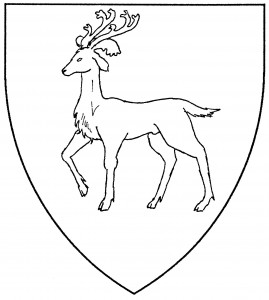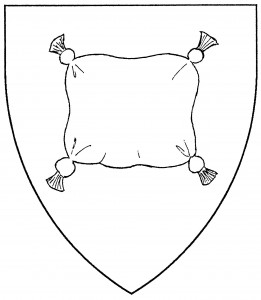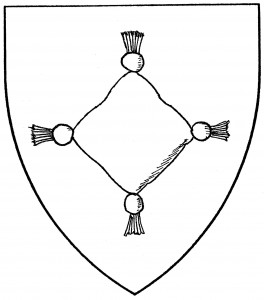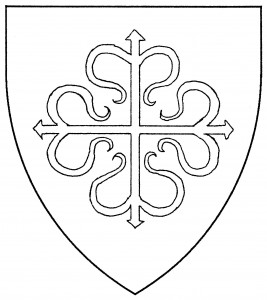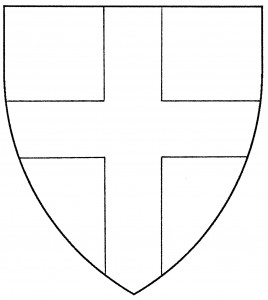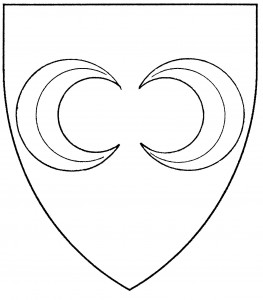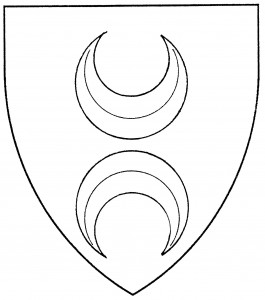The griffin, or gryphon, is a classical monster, with the head, wings and forefeet of an eagle, the hindquarters of a lion, and mammalian ears; period emblazons sometimes show it bearded as well. Its default posture is rampant, which when applied to griffins may be termed “segreant”. The griffin is one of the earliest heraldic monsters, dating from c.1280 in the arms of Montagu [ANA2 492].
The griffin has several variant forms, as might be expected for a monster of such antiquity. The form found in ancient Assyria, for example, has a lion’s forelegs instead of an eagle’s forelegs; no heraldic difference is granted for this artistic variation.
There is also what later texts call the “male griffin”: this differs from the standard griffin by a lack of wings, and by sharp spikes radiating from its body. (The term “male griffin” is a misnomer: both forms were shown with male members in period art.) This same creature was termed a “keythong” in a roll of badges, 1475 [Dennys CoA]; it was certainly considered a separate monster in period. Some authors have suggested that it developed from the German form of the heraldic panther, with the spikes meant as the panther’s flames. “Male griffin” is the more common term for this monster, but “keythong” is coming into use as well. The illustration shows a keythong rampant.
For related charges, see dragon, hippogriff, opinicus.
The King of Avacal bears: Quarterly argent and Or, a griffin rampant, on a point pointed gules a crown within a laurel wreath Or.
Alfonso de Castile bears: Or, a griffin segreant sable.
John ap Griffin bears: Vert, a griffin segreant contourny Or.
Maureen ha-Ivriah bears: Azure, an Assyrian griffin couchant, gazing to chief, wings displayed argent.
Gruffydd ap Idwallon bears: Ermine, a keythong rampant contourny reguardant vert.

